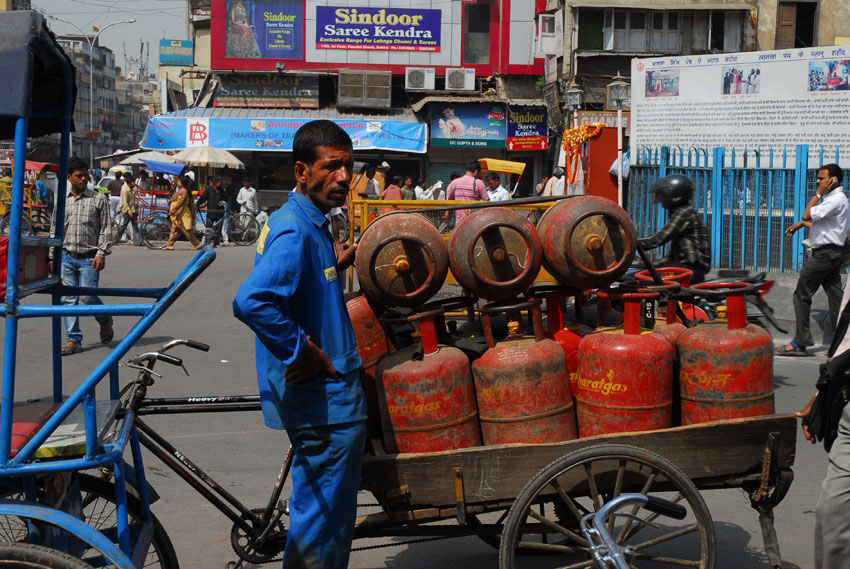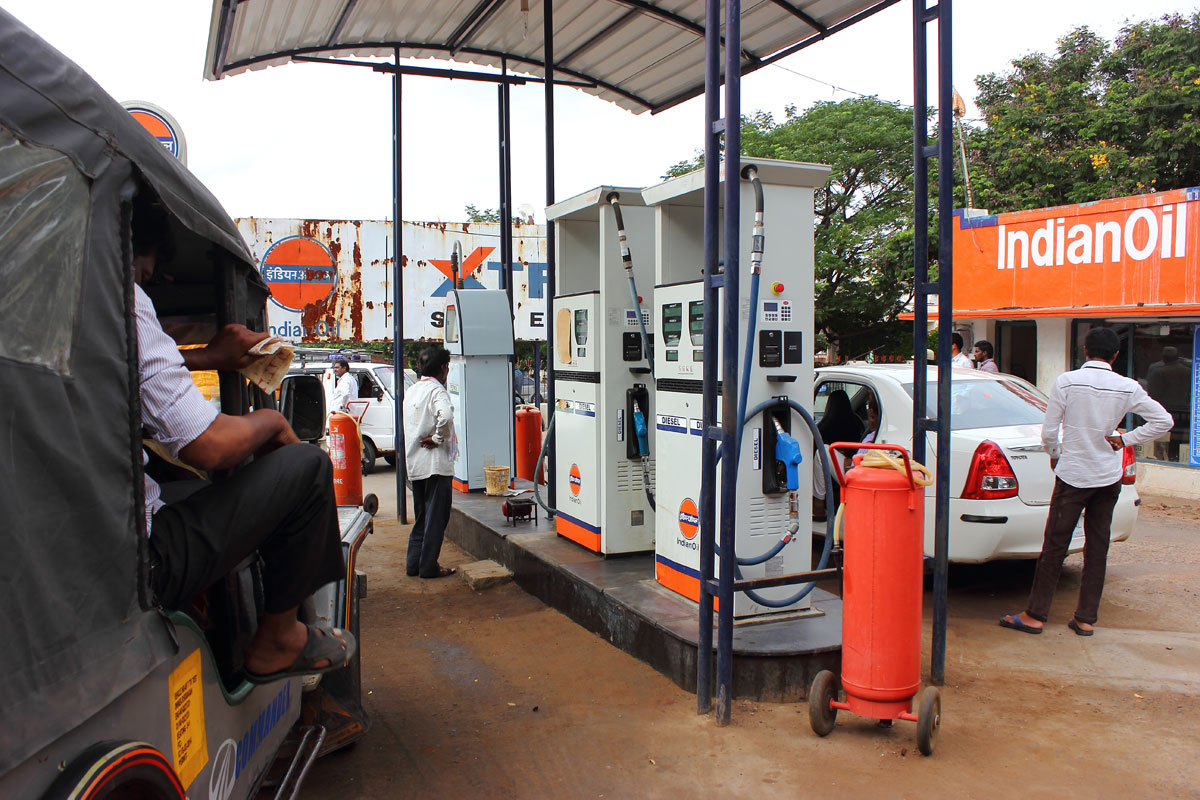A SILVER LINING
People buying gasoline and diesel at an Indian Oil gas station at Srisailam, Telangana, India. (iStock | Getty Images)
The stock markets in India might have crashed, while onion prices in the country have sky rocketed as rains have destroyed the latest crop. Indians, however, still have something to cheer about: the cut in fuel prices, both gasoline and diesel due to sharp fall in global crude oil rates. Over recent months domestic gasoline, diesel and LPG prices have been reduced on several occasions in keeping with international benchmarks, reducing cost and inflation, writes Siddharth Srivastava.
India imports about 80% of its oil needs from the Middle East, Africa and Latin America. A big chunk of the county’s population rides on two-wheelers that run on gasoline. Diesel prices affect cost due to impact on the transport sector. Oil prices have been driven down due to a combination of several international developments including Saudi Arabia’s stubbornly pursuing high production in order to take on U.S. shale oil producers and prospects of sanctions being removed on Iran. Moreover, with the shale revolution in America, the crude flow from West Asia has shifted from North America to Asia. European markets too can tap multiple markets now.
Over the last few days, the fear of China’s slowing economic growth has caused international oil prices to crash further. The result: Crude oil prices dipped to $40 a barrel, a precipitous fall from $100 a barrel, a year back.
Sensing the opportunity, the Indian government wants oil producers, including OPEC suppliers, to offer discounts instead of charging a premium, due to emergence of buyer’s market. Spelling out clearly that Indian refiners are looking to strike better bargains given the changed circumstances, B. Ashok, chairman of country’s largest state-owned refining-cum-retailing entity, Indian Oil Corporation (IOC), recently said, “The dynamics of business have changed. It is no longer a supplier’s market, but it is a buyer’s market. Today we (Asian refiners) should get a discount rather than paying a premium. The direction of crude flow from West Asia has shifted to Asia.”
According to Ashok, with the crude flow changing, the pricing too needs to evolve incorporating the new equations. “There could have been times when price for the Asian markets was probably a little more than the North American or European markets, which was typically called the Asian Premium. But since the flows have now changed, we are observing in the last few months that the prices we seem to be getting are better than the other markets,” Ashok said.
The comments by the IOC chief follow similar statements during the recent OPEC meeting in Vienna, by India’s Minister of Oil & Natural Gas, Dharmendra Pradhan, who also referred to the shift in market dynamics and consequent need to correct the price mechanism. Pradhan said big buyers such as India and China should get an Asian dividend rather than having to pay an Asian premium for bulk purchases.

“The Asian Premium was historically never justified and so not justifiable in the changed market scenario where Asian countries are the major buyers. Any measure that erodes the advantage of geography for Asian countries and promotes a policy of subsidizing oil traffic to distant destinations is not in interest of sustainable development,” he said.
In an indication that New Delhi does mean business, India has reportedly postponed taking deliveries of at least 20 shiploads of Liquefied Natural Gas (LNG) from its main supplier, Qatar, and wants a rate cut matching the 60% fall in international rates. India buys 7.5 million tons a year of LNG from RasGas of Qatar on a long-term 25-year contract, indexed to a moving average of crude oil price. The price of LNG from Qatar is close to $13 per unit when compared to $6-7 per unit rate at which it is available in the spot market. India has “deferred taking deliveries of 20/21 cargoes so far in 2015 calendar year,” a source was quoted by news agency PTI.
Meanwhile, another major hydrocarbon producer Russia, at loggerheads with western nations over the Ukraine conflict, is targeting India for enhanced crude oil supplies, thus adding to the evolving dynamics with West Asia. Russia has been looking to capture emerging Asian markets with greater potential for demand growth. According to reports last week, another Indian state-owned refiner Bharat Petroleum Corp Ltd (BPCL) is set to import a rare cargo of Sokol crude from Russia’s Far-East, taking advantage of regional supply glut to secure cheaper oil.
Last month state-run Rosneft, Russia’s largest oil producer, finalized a deal to supply 200,000 barrels per day of oil for the next decade to Essar Oil, India’s second biggest private refiner that operates the 20 million tons a year Vadinar refinery in Gujarat. Essar has been a major importer of Middle-East oil, especially Iran. Clearly, the Indian government as also private entities are keen to best harness the situation arising out of excess supply and reduced crude oil prices that can drastically cut the country’s huge import bill and benefit the consumer.
India’s crude oil import from all sources was 189.4 million tons in 2014-15 worth $112.7 billion. Nigeria has recently overtaken Saudi Arabia as India’s leading oil supplier.


